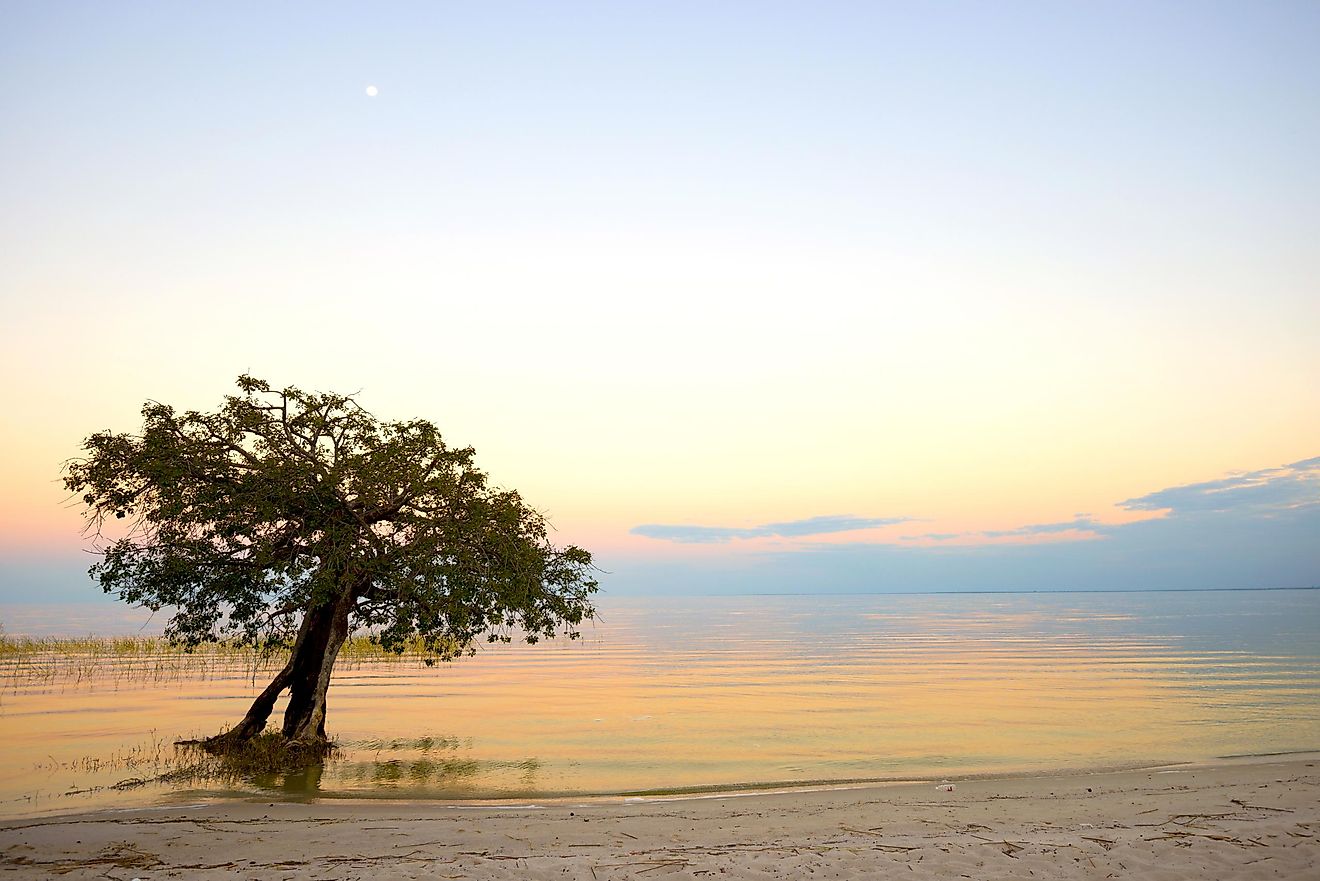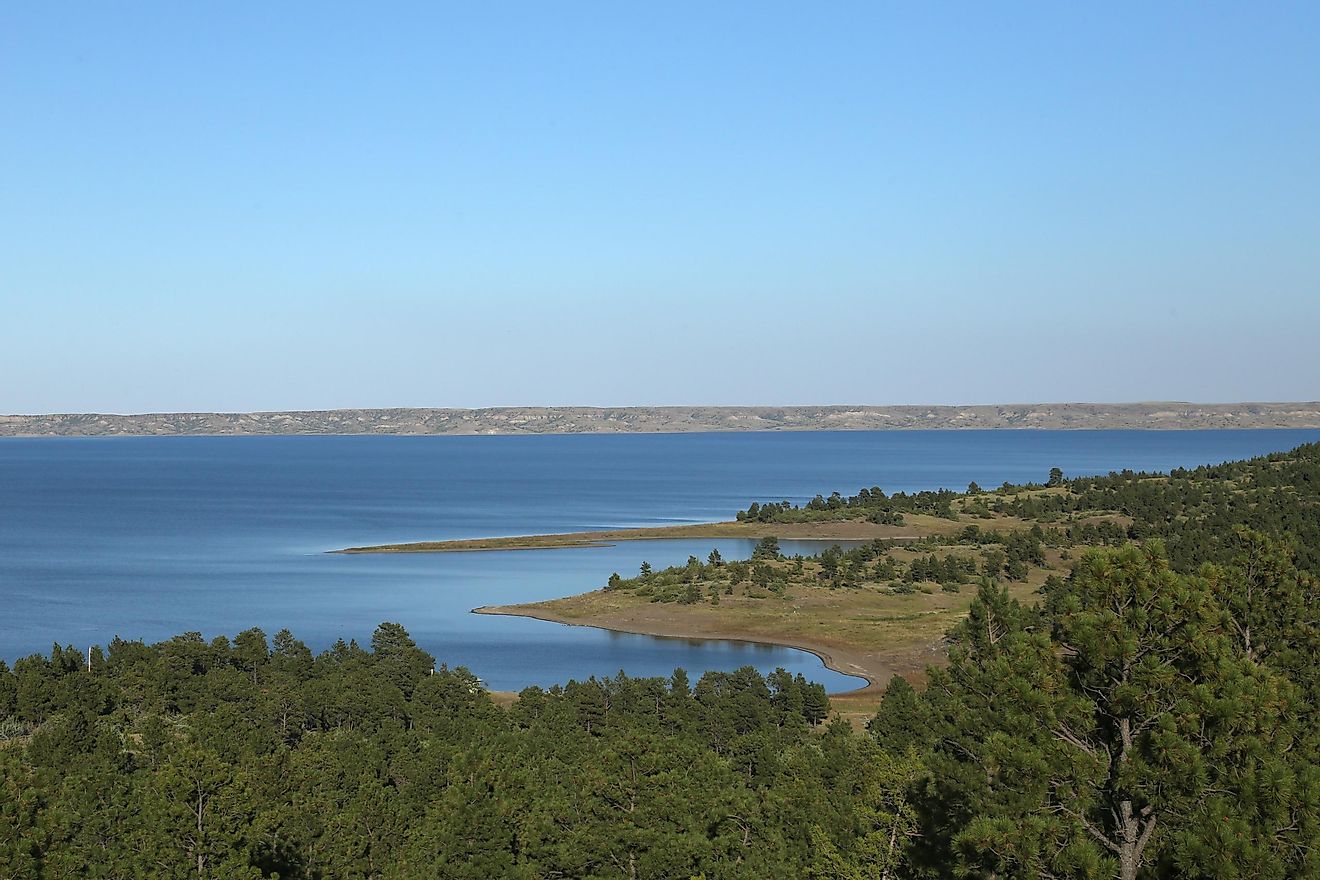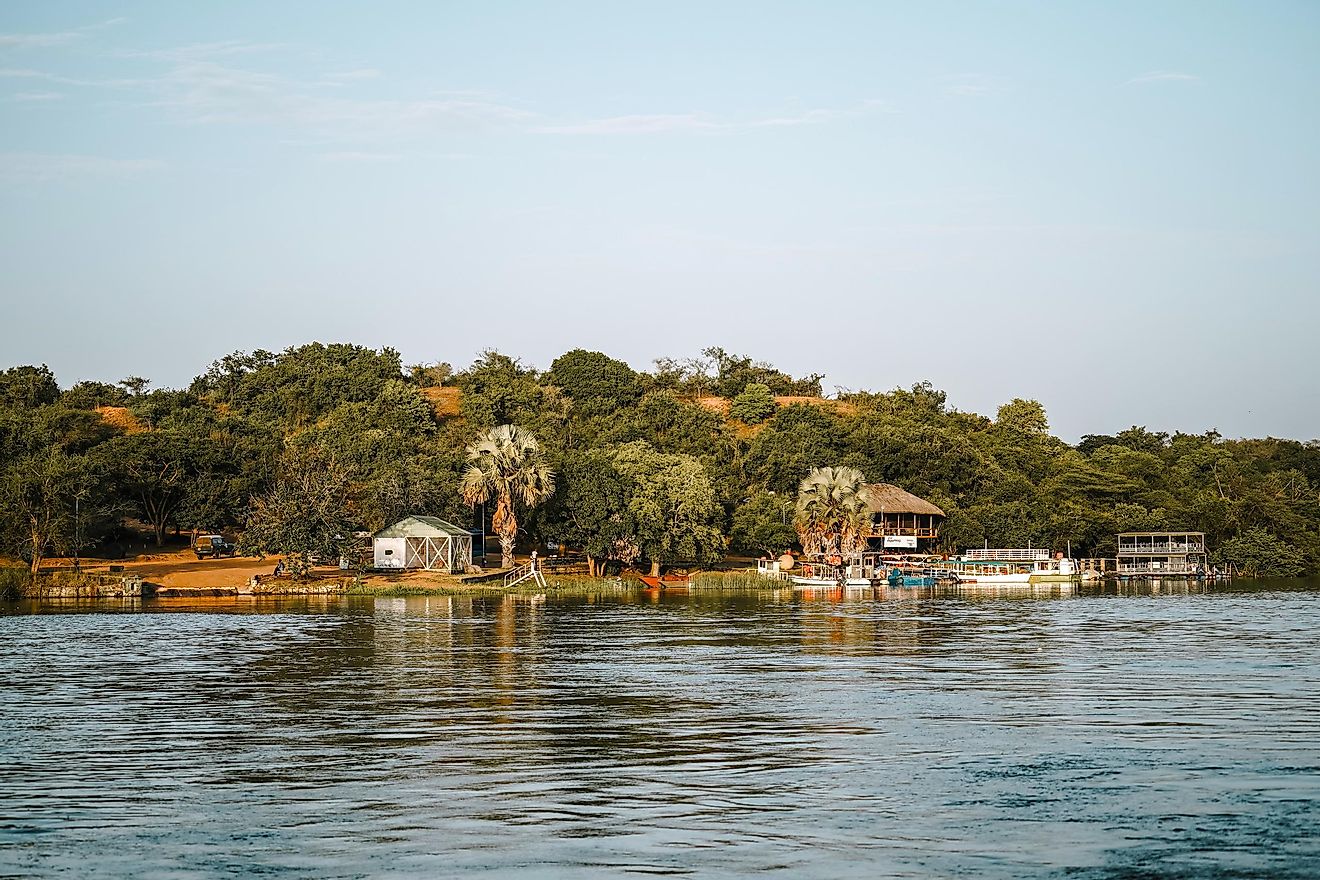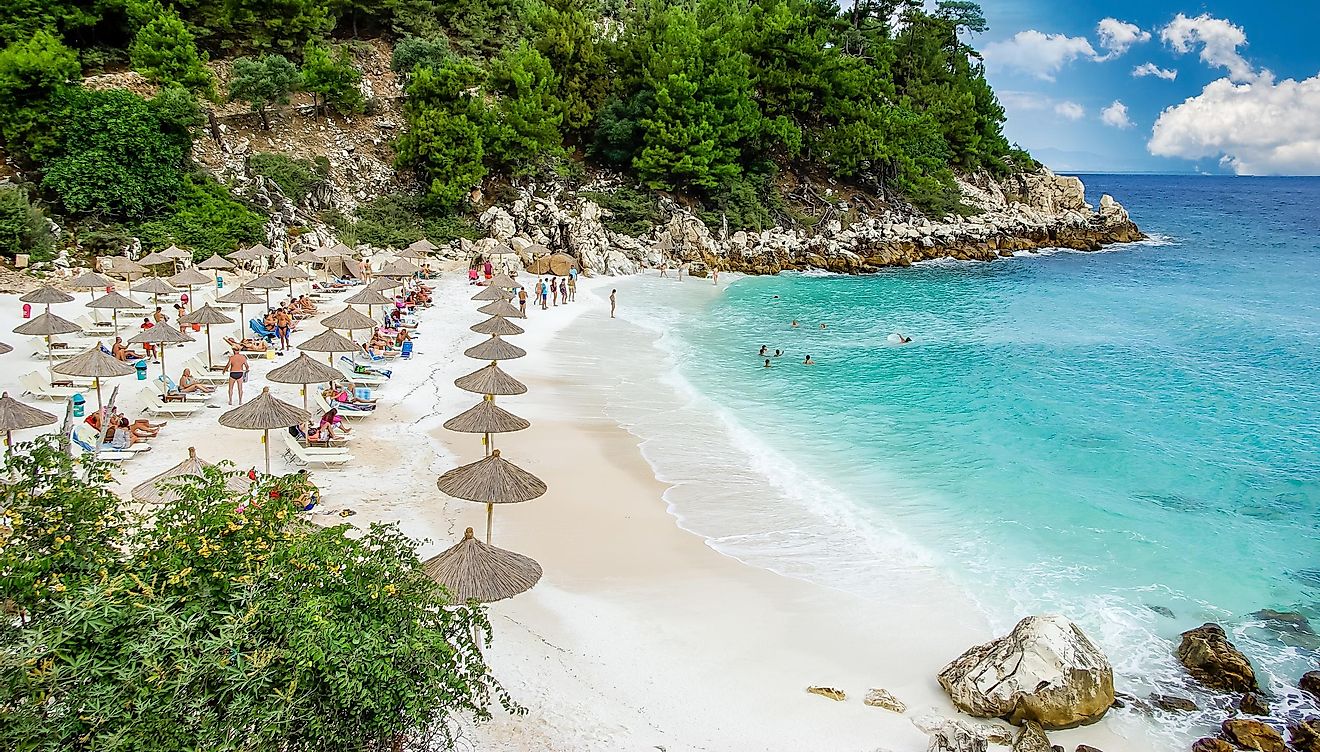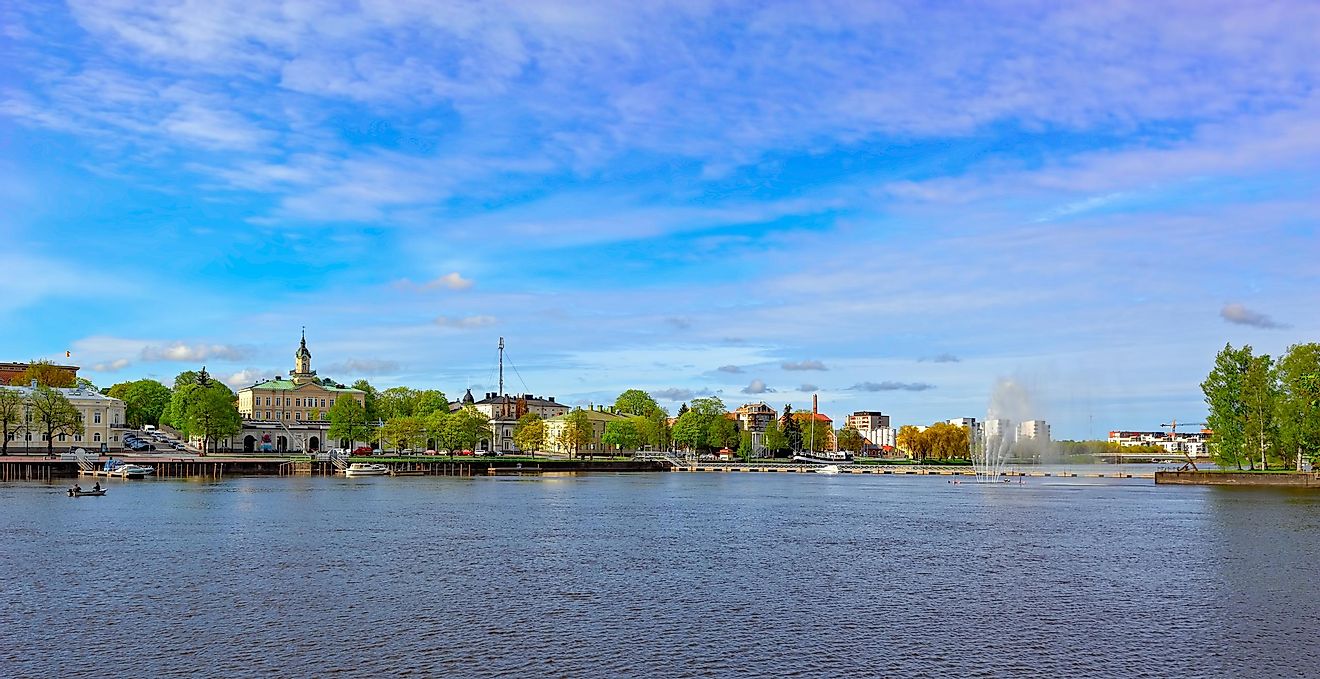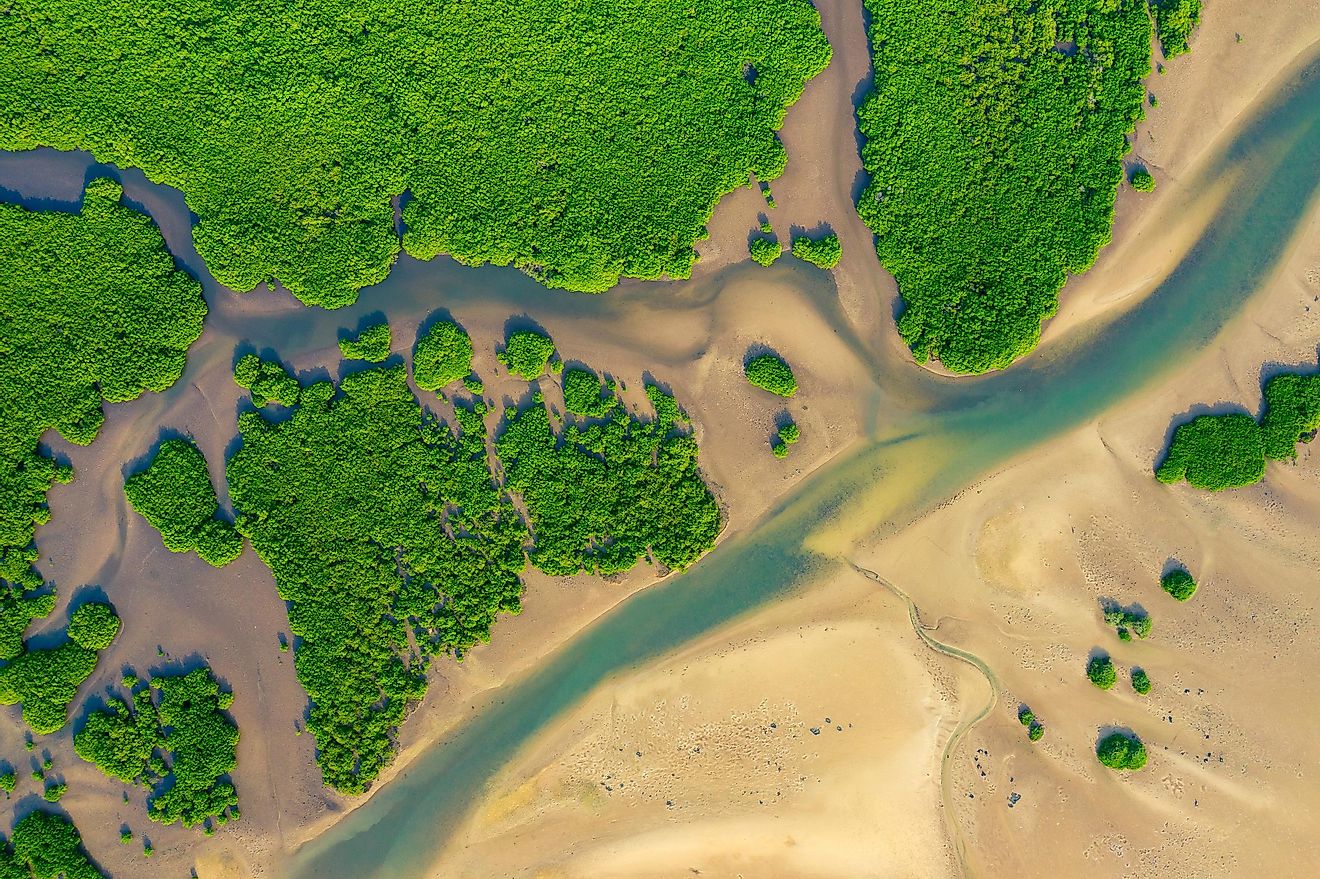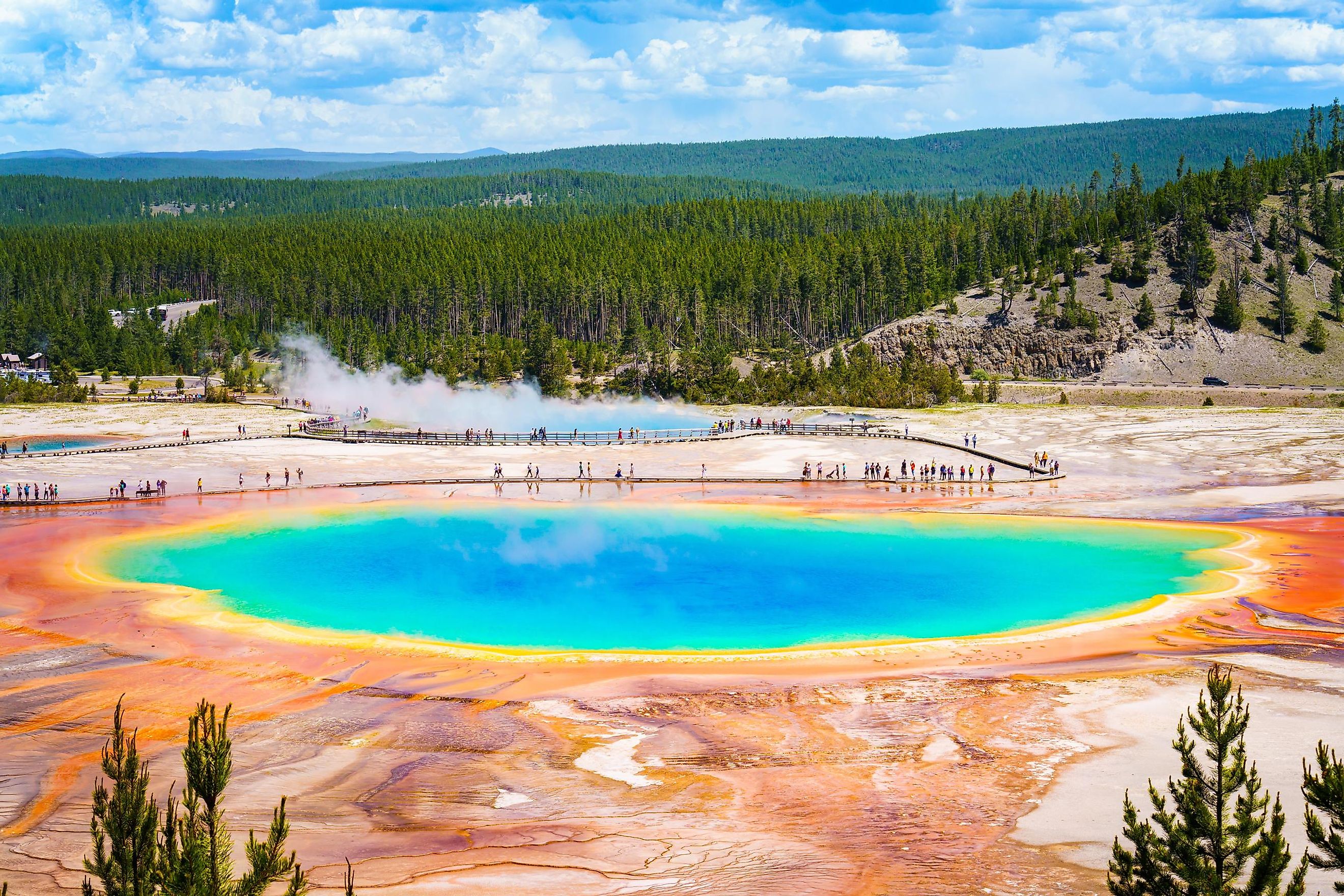
Grand Prismatic Spring, Yellowstone National Park
Yellowstone National Park was the first National Park in the US and is believed by some to be the first in the world. It is 3,468 square miles, nestled mostly within Wyoming but also reaches into Idaho and Montana. It is one of the most popular parks in the United States and sees nearly two million visitors per year, with a dozen campgrounds and over 2,000 individual campsites. The park is known for its volcanic activity, as the Yellowstone Caldera that it sits over is a dormant supervolcano. This activity shows itself in a number of ways, including geysers and hot springs. One of these hot springs, the Grand Prismatic Spring, is one of the most famous tourist draws in Yellowstone.
The Grand Prismatic Spring
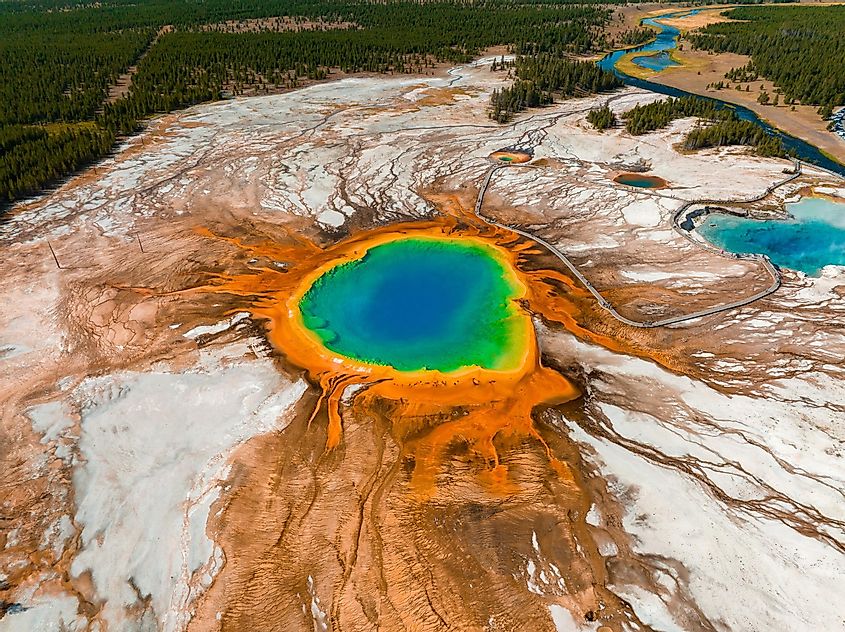
The Grand Prismatic Spring is famous for its richly saturated coloration, being a deep blue in the center, with an outer rim that changes color depending on the time of year, ranging from green to red to yellow. It is the largest hot spring in the United States, with a diameter of 370 feet. The park has put up walkways and viewing platforms that approach the spring, but this is not the kind of hot spring where one wants to undress and slip in for a relaxing soak. The water sits at around 160 degrees Fahrenheit, while the average human pain threshold for tolerating hot water is around 110 degrees. The water here is hot enough to cause severe burns or even sear through clothing.
History
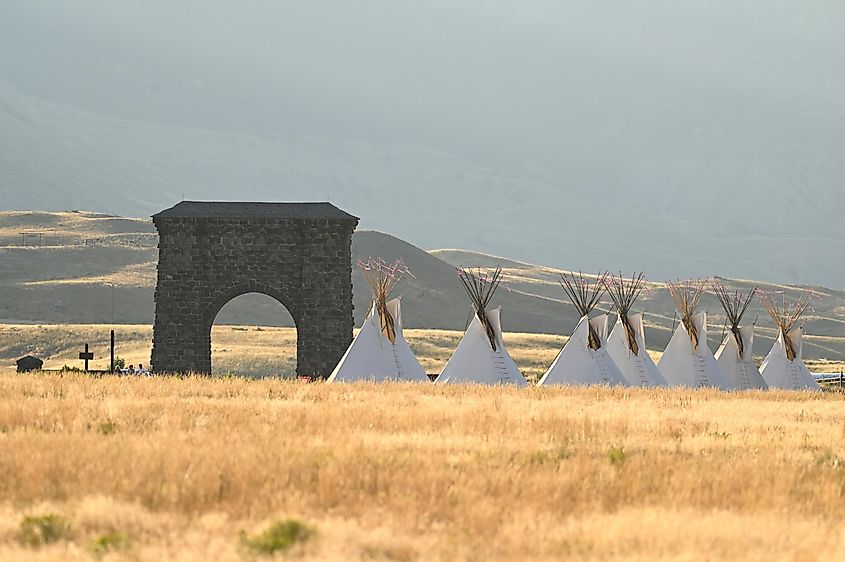
It's believed that the Grand Prismatic Spring's first known description by Euro-American settlers was in 1839 when a group of fur trappers passing through the area described a "boiling lake" with a diameter of around 300 feet. However, archeological and oral historical evidence suggests that people have inhabited and made use of the area for over 11,000 years, including using the hot springs for cooking food and bathing in the less-boiling springs for medicinal and spiritual purposes.
During Yellowstone's founding as a national park, park authorities began spreading the myth that Indigenous peoples were "afraid" of the hot springs and water geysers, and so avoided the area to attract visitors under the impression that Yellowstone was a pristine, unexplored wilderness. This is patently untrue, however, as the land within the park has availed many different Indigenous groups, including the Shoshone, Crow, Blackfeet, and Kiowa peoples, of meat, fish, plants, and precious stones such as obsidian for thousands of years.
The Grand Prismatic Spring was first officially described and named during the Hayden Expedition of 1871, the first federally-funded expedition through what would eventually become Yellowstone National Park. The Spring was named for its unmistakable, vibrant hues, which match those of an optical prism.
Geography
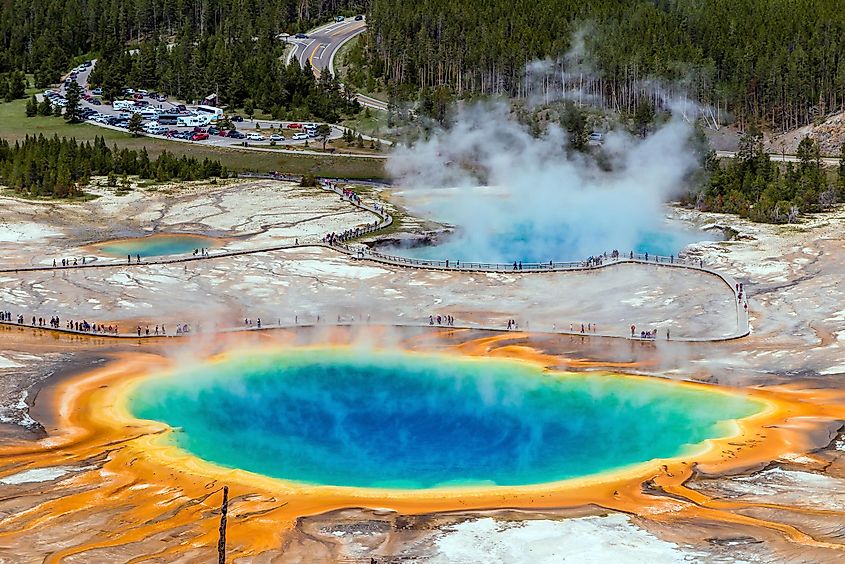
The spring lies 7,270 feet above sea level, and the spring itself is 160 feet deep, with the water surging to the surface from a crack deep within the Earth's surface, discharging 560 gallons of water per minute. Grand Prismatic is the third-largest hot spring in the world, behind the Frying Pan Lake of New Zealand and the Boiling Lake of Dominica. With a diameter of 370 feet, the spring is larger than an American football field.
The Spring also lies close to the Excelsior Geyser, which was once famous for erupting water up to 300 feet in the air during the 1800s, though it now lies mostly dormant and functions mainly as another hot spring, being a geyser only by name.
The Source Of Its Color
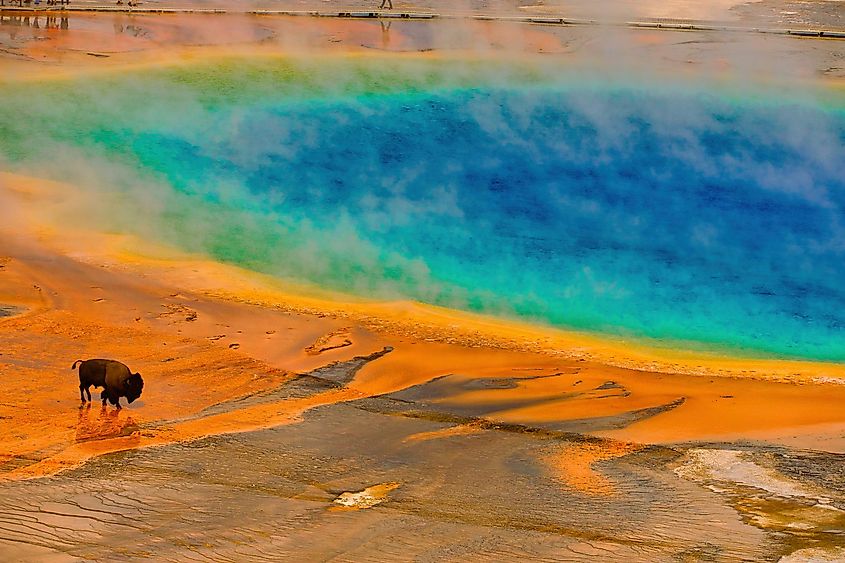
But why does the Grand Prismatic Spring look the way it does? The answer doesn't actually lie in the minerals or chemicals within the water but within the species of thermophile bacteria that live in the spring. The center of the spring remains bright blue year-round due to its extreme heat killing off any bacteria, even those that thrive within high temperatures, and so the wavelengths of light reflect back as pure blue due to the intrinsic color of the water.
However, as you go farther out from the center and the water begins to cool, it becomes habitable for different species of bacteria, which is what causes the water to take on different hues in ring-like patterns throughout the exterior of the spring. This is also why the color changes seasonally, depending on the time of year.
Some of these thermophilic species have actually been instrumental in a range of scientific and medical advancements, including the sequencing of the human genome, as well as the development of COVID-19 rapid tests. The PCR test, which is foundational to testing for COVID, cancer, or even genetic tests to determine the relation between individuals, was only made possible through something called the "Yellowstone Taq Enzyme," which came from a thermophilic bacteria species within the park.
The image of the Grand Prismatic Spring and its unique, vibrant colors are known the world over. The viewing platforms and walkways along the spring can also be found on the way to the Old Faithful Geyser, another one of Yellowstone's internationally renowned landmarks, making it a beautiful and worthwhile stop for any trip through all of Yellowstone's must-see tourist attractions.
